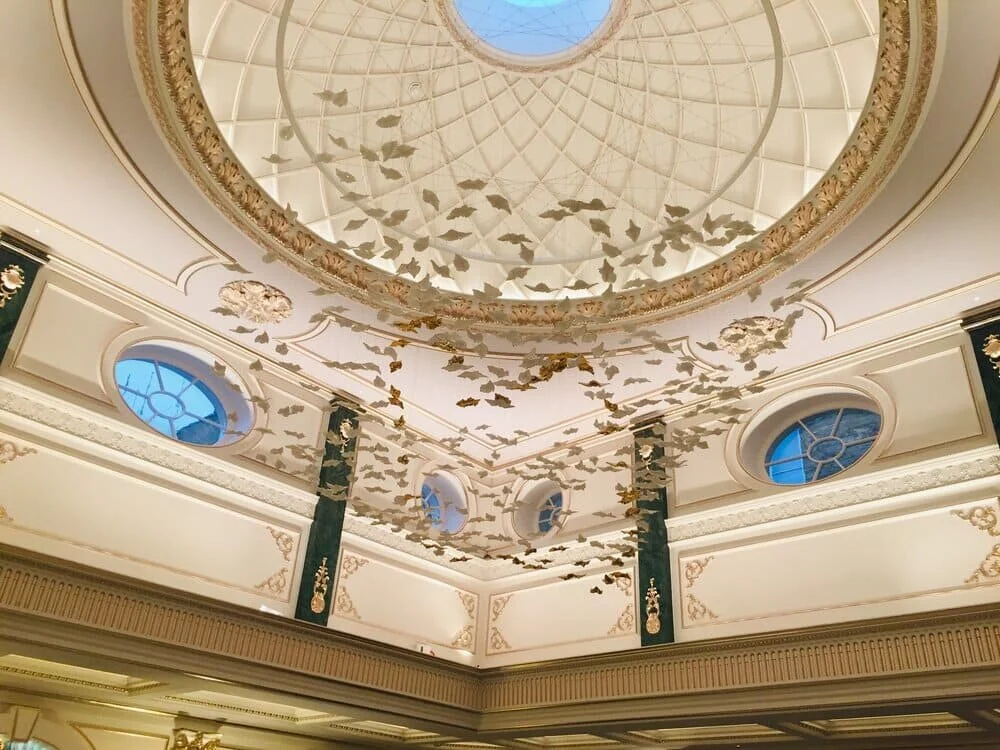Designing for the five-star lifestyle at home
Have you ever been to a hotel and thought, “what an exceptional space, I’m going to enjoy staying here. I wish I had this design in my home”. Hotels and other hospitality businesses have positioned themselves to deliver designs, spaces and decor customers would aspire to have in their own homes. With this, interior designers like us at SP3 London are crafting something quietly transformative. They’re looking at crafting homes that don’t just look beautiful, but feel like a daily escape. The idea of “hospitality-inspired living” isn’t about installing a check-in desk in your foyer or turning your guest bedroom into a Marriott suite. It’s more subtle and far more personal.
At SP3 London, our hospitality design management experience enables homeowners to replicate this feeling, creating homes that don’t just look beautiful but provide a daily escape.
At its heart, designing for a five-star lifestyle at home means rethinking how a space serves those living there. Utilising the luxury hospitality sector and business principles can help to bring this into your own home. From, sensory intention, mood lighting, layout flow and even service based thinking. The goal is comfort without compromise, elegance with emotional resonance.
What defines the five-star lifestyle at home?
The five-star lifestyle at home goes beyond lavish decor or extravagant furnishings. It’s about creating an atmosphere that delivers refined comfort and intuitive ease. Think about it, when it comes to hotels, especially luxury hotels, they’ve mastered the subtle art of anticipating needs. Residential homes designed with hospitality principles offer carefully considered details to make those living in the space comfortable. This could be anything from:
Plush textiles
Customised lighting
Sensory elements like signature scents or acoustically softened spaces.
Attention to detail is paramount just like in luxury hotels. Every touchpoint, from bespoke cabinetry to thoughtfully hidden technology, is meticulously planned to enhance daily living.
Focusing on the layout encourages a seamless flow, creating spaces that effortlessly transition between restful solitude and vibrant gathering. The true hallmark of this lifestyle is functionality that feels effortless yet tailored. We’re talking about a luxury expressed not through opulence but through personalised, meaningful design choices that delivers the experience of home into something genuinely exceptional.
If you're interested in bringing more of the luxury feel into your space, see our Luxury Interior Design services.
The power of sensory design
When you walk into a truly great hotel, you’ll notice something before you even see the room. It could be a scent, a texture, an ambiance that envelopes you. High-end hospitality works on a multisensory level. This is something designers like us at SP3 London are increasingly bringing into homes.
It can start with a scent. As designers we don't just focus on the physical visuals. We understand that humans have multiple senses we can try to engage as part of designing a space. So collaborating with perfumers to create signature home fragrances is a requirement that can always be considered. Creating a bespoke scent with custom blends that match the mood of a space, diffused subtly through HVAC systems or essential oil nebulisers can elevate a space and replicate hospitality principles.
Continuing with engaging the senses, sound, too, is being considered now with greater care. Hidden speakers and acoustic design elements, which were once the domain of high budget home theatres are naturally making their way into living spaces such as the living rooms, bathrooms and even kitchens. With such requirements, soundscaping systems are also being considered on projects to mimic the quiet rustle of trees or the gentle white noise of ocean surf to give those living in the space a sound that adds to the space providing calmness and comfortability.
And then finally there’s texture. The hospitality world taught us that comfort is tactile. Plush throws, nubby rugs and layered upholstery invite interaction. In five-star-inspired homes, nothing is too precious to touch and the mix of materials, from linen against velvet, brass against oak, creates a living, breathing sense of place.
If you want to understand more about what we can do in your home when it comes to sensory design, please see our FF&E Services and FF&E Design.
Setting the mood with precision lighting
Lighting is arguably one of the most transformative tools in a designer’s kit. Lighting can make or break a space. In luxury hotels, lighting is almost theatrical, it's warm, layered and highly adaptable. It’s the same at home now.
We’re finding clients are looking for more than simple overhead fixtures, instead integrating lighting in a more architectural way, for example:
Cove lighting that traces a ceiling
Toe-kick lighting beneath vanities
Soft LEDs hidden behind headboards
These elements add depth and softness, casting glows that feel intentional rather than functional.
Dimmers are now very much a non-negotiable. So are smart systems like Lutron and Ketra, which allow homeowners to change light temperature throughout the day, cooler for productivity, warmer for relaxation. This mirrors our biological rhythms and promotes wellbeing, a philosophy rooted in both hospitality and biophilic design.
Lighting is also emotional. In kitchens, warm task lighting can make nightly routines feel cosy rather than clinical. In bathrooms, backlit mirrors and gentle sconces evoke the calm of a spa. It’s not about brightness, it’s about being able to find and deliver the right balance to those using the space.
Layouts that invite relaxation
A five-star hotel room is rarely cluttered. Not because there’s nothing in it, but because everything has a place and a purpose. That same spatial clarity is now being engineered into residential layouts.
Designers are zoning open-plan homes into distinct but fluid areas, breakfast nooks that continue naturally into family spaces, home offices subtly partitioned by shelving or glass dividers. Circulation is key. A luxury home doesn’t just offer square footage, it offers freedom of movement.
Closets are becoming dressing rooms. Primary suites are designed as full-fledged sanctuaries with lounge seating, not just beds. Powder rooms, those fleeting but memorable spaces are styled like miniature jewel boxes, with bold wallpaper, sculptural sinks, and moody lighting.
Kitchens, once relegated to pure function, are becoming showpieces with professional-grade appliances and banquette seating. But perhaps more importantly, designers like us are thinking in terms of hospitality: What does it feel like to welcome a friend into this space? How does the layout support hosting without stress?
Bespoke over built-in
There’s a growing appetite for individuality over uniformity. Built-ins may be efficient, but bespoke finishes carry the weight of craftsmanship. A hand-carved console, a marble vanity tailored to your morning routine, or a closet lined in custom oak veneer,these aren’t just upgrades, they’re expressions of self.
Much like in high-end hotels where every suite feels subtly different, today’s luxury homes are embracing imperfection and personality. It’s the difference between a room that’s finished and one that’s felt.
Where hospitality meets home
Ultimately, designing for the five-star lifestyle at home isn’t about copying a hotel, it’s about capturing the feeling of being cared for. Of stepping into a space that anticipates your needs, respects your rhythms, and invites you to exhale.
That’s why interior designers like us at SP3 London are asking different questions now. Not just “How should this look?” but “How should this feel at 7am on a Wednesday?” or “What will make someone pause and smile as they pass through this hallway?”
It’s a shift from styling to storytelling, from status to serenity.
And for many, that shift is worth every inch of effort.







